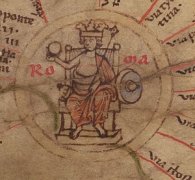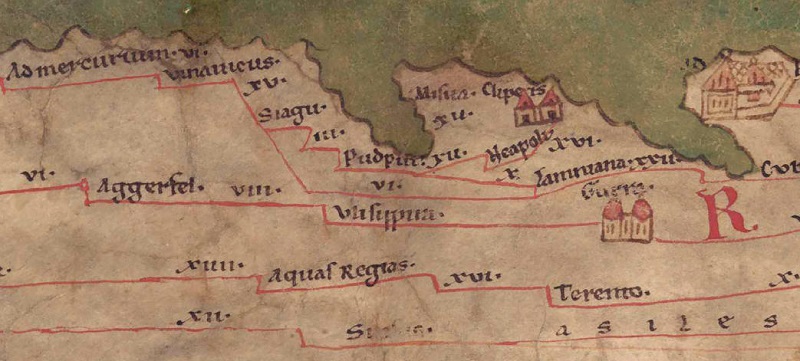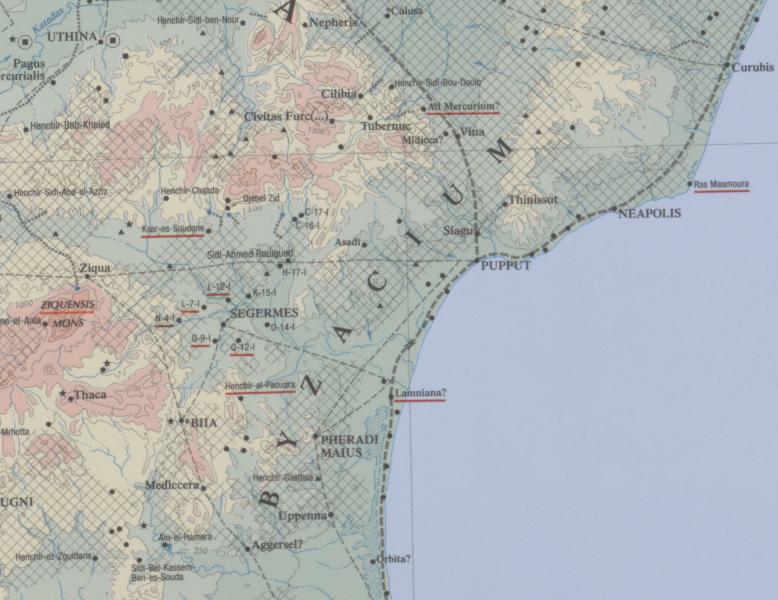
Tabula Peutingeriana – Einzelanzeige
| Toponym TP (aufgelöst): | Pudput |
| Name (modern): | Souk-el-Abiod |
| Bild: |  Zum Bildausschnitt auf der gesamten TP |
| Toponym vorher | III (Unnamed / illegible, no. V) |
| Toponym nachher | XII Neapoli X Lamniana |
| Alternatives Bild | --- |
| Bild (Barrington 2000) |
 |
| Bild (Scheyb 1753) | --- |
| Bild (Welser 1598) | --- |
| Bild (MSI 2025) | --- |
| Pleiades: | https://pleiades.stoa.org/places/315121 |
| Großraum: | Africa Proconsularis |
| Toponym Typus: | Ortsname ohne Symbol |
| Planquadrat: | 5C2 |
| Farbe des Toponyms: | schwarz |
| Vignette Typus : | --- |
| Itinerar (ed. Cuntz): | Pupput (52,4; 56,6; 58,3) |
| Alternativer Name (Lexika): | Pudput (DNP) |
| RE: | Pudput |
| Barrington Atlas: | Pupput (32 G4) |
| TIR / TIB /sonstiges: |
|
| Miller: | Pudput |
| Levi: |
|
| Ravennat: | Pulpud (p. 88.43) |
| Ptolemaios (ed. Stückelberger / Grasshoff): |
|
| Plinius: |
|
| Strabo: |
|
| Autor (Hellenismus / Späte Republik): |
|
| Datierung des Toponyms auf der TP: | --- |
| Begründung zur Datierung: |
|
| Kommentar zum Toponym: |
Miller, Itineraria, Sp. 906: |
| Literatur: |
Miller, Itineraria, Sp. 906. 927; |
| Letzte Bearbeitung: | 28.02.2025 10:19 |
Cite this page:
https://www1.ku.de/ggf/ag/tabula_peutingeriana/trefferanzeige.php?id=1581 [zuletzt aufgerufen am 28.12.2025]